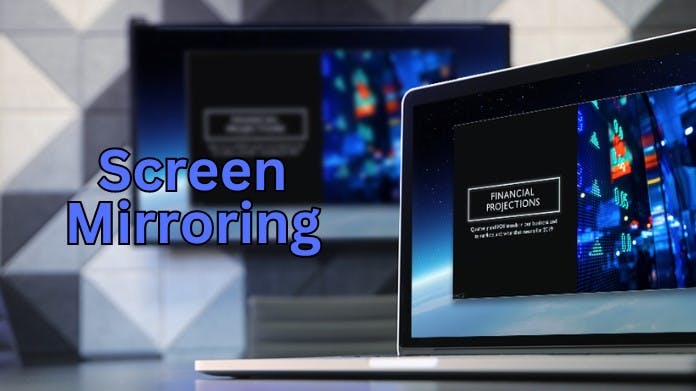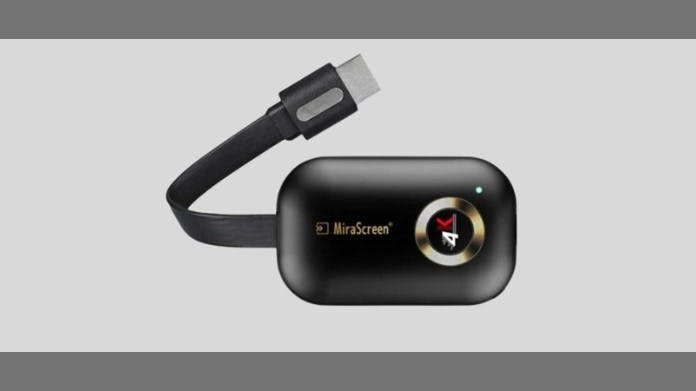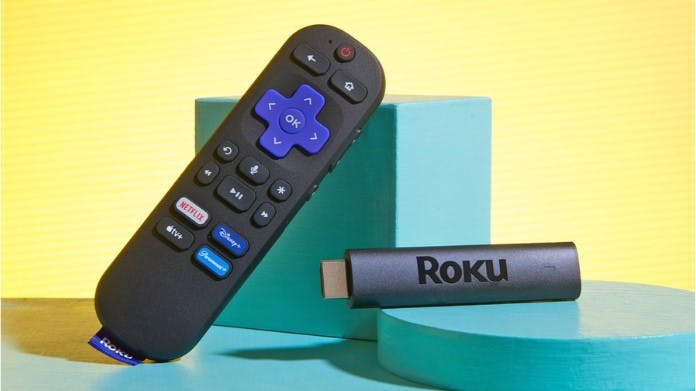Devices With Screen Mirroring Features

Are you curious to know more about screen mirroring devices? Well, you have come to the right place. Scroll down as we unravel everything you need to know about screen mirroring devices.
In today's interconnected digital landscape, the ability to seamlessly share content across devices has become a fundamental aspect of our daily lives.
Screen mirroring technology has transformed the way we engage with our digital information, whether it's streaming a movie from your smartphone to your TV, projecting a slideshow from your laptop to a projector, or reflecting the screen of your tablet to a brilliant display.
If you are also looking for a third application for screen mirroring then Scrcpy wireless is the best screen mirroring application that allows you to mirror your phone screen to a large screen with a high-quality display.
In this comprehensive guide, We'll explore all of the devices and methods that enable screen mirroring in this extensive guide, delving into the intriguing world of screen mirroring.
A plethora of technology, from smart TVs and streaming devices to smartphones and tablets, make it simple to share your screen.
Overview of Screen Mirroring
Screen mirroring makes it possible to reflect a device's display to another. It has completely changed the way we interact with digital content.

Screen mirroring offers a practical and adaptable solution to enhance our multimedia experience, whether it is for sharing images, movies, presentations, or even complete programs.
Screen mirroring essentially functions by wirelessly sending the audiovisual output of one device, like a computer, tablet, or smartphone, to another display, like a TV, projector, or monitor.
Users may now share their material with others in a group setting or enjoy it on a bigger screen, thanks to this.
Applications for screen mirroring can be found in a variety of fields, such as gaming, business, education, and entertainment. Screen mirroring is a handy tool for improving communication and teamwork in the digital era.
Devices Using Screen Mirroring
1. Apple TV 4K:
With Apple TV 4K's amazing 3840 x 2160 resolution for ultra-high definition entertainment, Apple's AirPlay 2 technology provides a seamless screen mirroring experience.

This implies that your material will seem in incredibly sharp clarity on your television screen whether you're streaming videos, sharing pictures, or giving presentations. Sadly, using it requires you to remain inside the Apple ecosystem, so forget about Windows, Android, and Chromebooks.
The Apple TV 4K is equipped with iPad-like hardware, including an A10X Fusion processor and 32GB or 64GB ($199) of storage for videos, presentations, and the occasional game or movie.
It is powered by an AC cord, features an HDMI connector, and operates on the 2.4GHz and 5GHz Wi-Fi bands as well as a wired Ethernet LAN.
With its Siri Remote, which recognizes commands, users can control the Apple TV from across the room. Though third parties like Innovelis manufacture wall-mounting brackets, the Apple TV 4 K's dimensions of 3.9 x 3.9 x 1.4 inches make it too large for a TV's back.
A Quick Look at Apple TV 4k:
Price: $179 (32GB), $199 (64GB)
Compatibility: Macs, iPads, iPhones
Resolution: 3840 x 2160 pixels
Size: 3.9 x 3.9 x 1.4 in.
Pros: 4K resolution; includes voice remote control
Cons: Not compatible with Windows, Android, or Chrome OS; big device; expensive Who it's best for: Offices full of Mac and iOS users who demand 4K-resolution video
2. Google Chromecast:
With Chromecast, users can mirror the screens of their Android tablets and smartphones as well as computer tabs from the Chrome web browser onto their televisions. Known as "Cast Screen" or "Cast Desktop," this technology lets users transfer web material, videos, presentations, and images from their devices to a bigger screen.

Chromecast devices are small and use the 2.4 and 5GHz bands of a Wi-Fi network. They are connected to displays via flat HDMI connections. Modern displays and TVs should be able to run from the USB port, but in case it doesn't, they come with an AC adaptor.
The Chromecast emits 1920 x 1080 pixels, which is a different resolution than the other Chromecast devices. Rather than the standard black Chromecast gadget, the Chromecast with Google TV comes with a voice-activated remote control and comes in white (also known as Snow), light blue (Sky), or salmon (Sunrise).
A Quick Look at Google Chromecast:
Price: $30
Compatibility: Android devices, plus Windows PCs, Macs, Chromebooks, iOS devices via Chromecast apps
Resolution: 1920 x 1080 pixels
Size: 6.4 x 2.0 x 0.5 in.
Pros: Tiny device; HD imaging; inexpensive; can be display-powered
Cons: Only mirrors screens on Android devices; Chromecast apps are needed for other platforms
Who it's best for: Offices with lots of Android devices
3. Microsoft 4K Wireless Display Adapter:
With the Microsoft 4K Wireless Display Adapter, users may extend or mirror the screen of their compatible devices in breathtaking 4K quality onto a larger display, like a television or projector.

This adapter, which was created by Microsoft, provides smooth and excellent screen mirroring, It makes it ideal for a range of applications, including as multimedia playing, gaming, and presentations.
it still has the distinctive 21-inch cord with a USB connector on one end and an HDMI plug on the other, just like its predecessor. A little electronics box is located in between.
The 4K Wireless Display Adapter uses the 2.4GHz and 5GHz Wi-Fi bands and can wirelessly mirror up to a 3840 x 2160 quality stream.
A Quick Look at Microsoft 4K Wireless Display Adapter:
Price: $60
Compatibility: Windows 10 PCs, Android devices
Resolution: 3840 x 2160 pixels
Size: 3.5 x 0.8 x 0.4 in.
Pros: little; simple to setup; capable of supporting a display
Cons: Not compatible with Chromebooks, iOS devices, or Macs
Who it's best for: Windows-based offices that also have Android users
4. MiraScreen G9 Plus 5G:
The MiraScreen G9 Plus 5G features one of the slightest impressions of any mirroring device, it just connects to a display or projector to mirror content from a wide range of computing devices, including Android, iPhone, and iPads, as well as Windows PCs, Macs, and Chromebooks.

The G9 Plus's interoperability with Chromecast, AirPlay, Miracast, and additional connection protocols is essential.
The device can also be used as a wireless Wi-Fi extender, employing the 2.4GHz and 5GHz Wi-Fi bands. Thankfully, it produces resolutions of up to 3840 x 2160 for precise presentations and video conferences.
With its 1.6GHz dual-core processor and ability to run from the USB port on many recent TVs and monitors, the G9 Plus is a powerful device even though it does not come with a USB AC adaptor for use with older screens.
Nevertheless, it's a little marvel that can link an office's worth of equipment at 2.4 x 1.5 x 0.5 inches.
A Quick Look at MiraScreen G9 Plus 5G:
Price: $45
Compatibility: Windows, Macs, Chromebooks, Android devices, iPhones, iPads Resolution: 3840 x 2160 pixels
Size: 2.4 x 1.5 x 0.5 in.
Pros: Tiny device; up to 4K resolution; wide range of compatibility
Cons: Might need a USB AC adapter
Who it's best for: Offices with a variety of computing devices to connect
5. The Roku Express+:
The Roku Express, Express+, and Streaming Stick+ are excellent choices for screen mirroring, while their primary uses are for home movie and TV streaming.

These devices come in a range of pricing, resolution, and compatibility configurations. Both the Express and the Streaming Stick+ are available directly from Roku and at a number of retailers; the Express+ is only available at Walmart.
The $40 Express+ comes in compact boxes and connects via the 2.4GHz Wi-Fi frequency via Miracast. They do not support Chromebooks or Apple devices, but they do support HD resolution and mirror Windows and Android systems.
A Quick Look at Roku Express+:
Price: $40
Compatibility: Windows PCs, Android devices
Resolution: 1920 x 1080 pixels
Size: 3.0 x 1.5 x 0.75 in.
Pros: Can be powered by display; voice-activated remote control
Cons: No compatibility with Macs, iOS devices, or Chromebooks
Who it's best for: An office that uses Windows and Android systems and wants to use a voice remote control
Conclusion
We've looked at a variety of screen mirroring tools and platforms in this article, including Roku Express+, Microsoft's Wireless Display Adapter, Google Chromecast, Apple AirPlay, and MiraScreen G9 Plus 5G. To accommodate a variety of tastes and use situations, every gadget has special features and capabilities.
According to our team research, we've concluded that Google Chromecast would be the best option for screen mirroring because it is cheap, trusted, and gives high-quality performance.
If you find this article more informative then do share this article with your friends and family.
